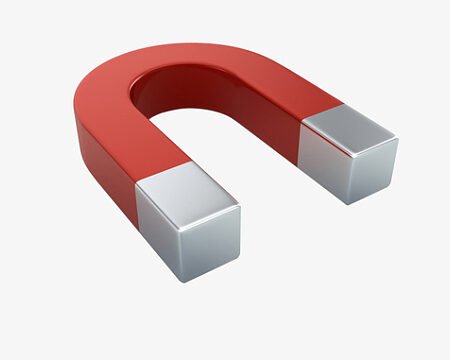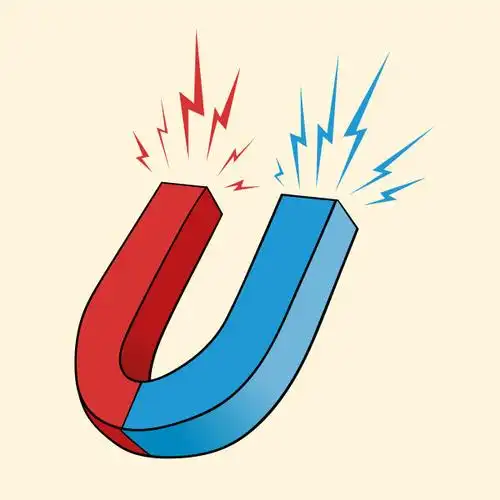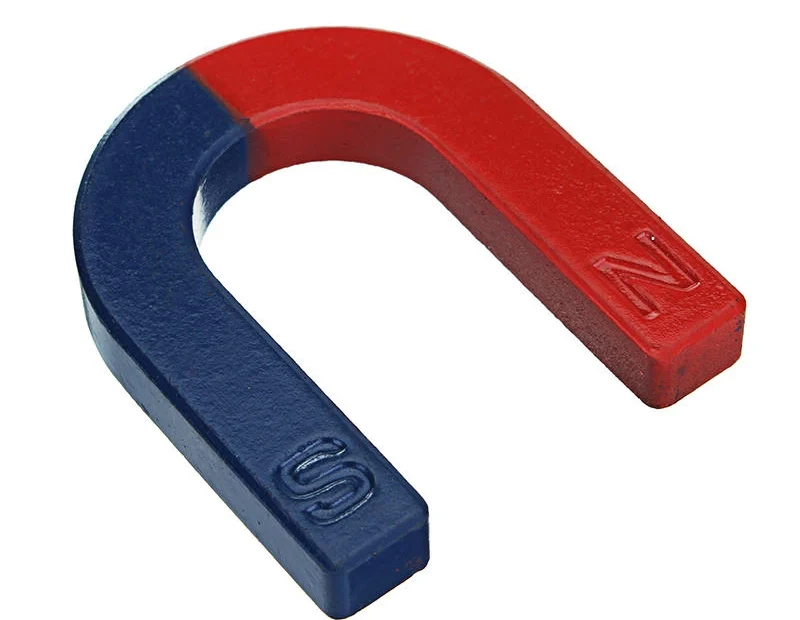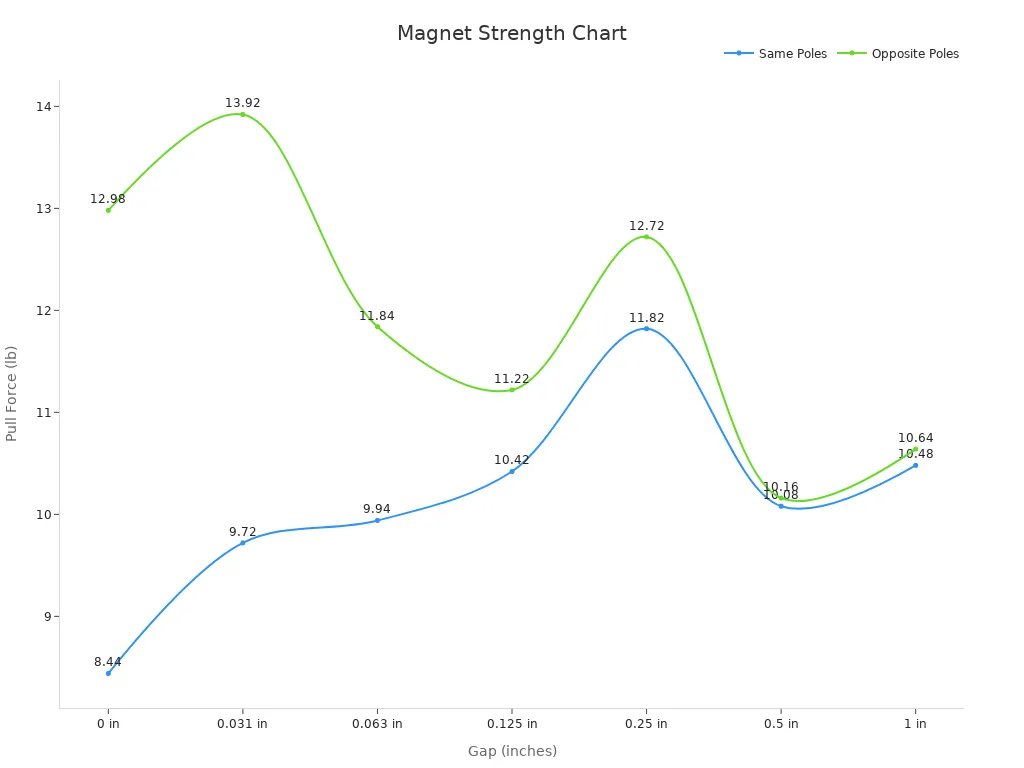A horseshoe magnet is a special magnet shaped like a U. Both magnetic poles are close together at the ends. This shape helps you pick up metal things more easily. It makes a strong magnetic pull between the two ends. The shape makes the magnet stronger than a bar magnet.
Through this article, you can understand “What is a horseshoe magnet and how does it work”. Meanwhile, you can also learn more about horseshoe magnet. CORT MAGNETS is committed to the production of magnets and hopes to help more people understand magnets through these articles.
CORT MAGNETS is a one-stop magnet manufacturer with over 15 years of experience. If you need custom magnets, I think you can consult us to understand the specific situation

Table of Contents
horseshoe magnet Key Takeaways
A horseshoe magnet has a U-shape. This shape brings its poles close together. This makes its magnetic pull stronger than a bar magnet.
The strong magnetic field is focused between the two ends. This lets the magnet lift heavier metal objects with less effort.
Horseshoe magnets can be permanent magnets or electromagnets. Permanent ones work without electricity. They last a long time.
Using a keeper helps maintain the magnet’s strength when not in use. A keeper is a small piece of iron placed across the poles.
Horseshoe magnets are good for picking up metal and organizing tools. They are also used for teaching science. People use them in factories and recycling centers, too.
To keep your magnet working well, store it properly. Avoid heat and impacts. Clean the poles often.
The U-shape design makes horseshoe magnets strong and durable. They are less likely to lose strength than other magnet shapes.
Horseshoe magnets are not good for every job. They do not attract non-magnetic metals. They can damage electronics if used too close.
Horseshoe Magnet Basics

U-Shape Design
The U-shape helps a horseshoe magnet work better. Both poles sit at the ends of the “U.” This puts them close together. The magnetic force is strongest in the gap between the tips. A horseshoe magnet can lift heavier things than a bar magnet of the same size. Engineers use computers to test and improve the shape. These tests help them make the magnetic field stronger and use less material. The U-shape almost doubles how much weight it can lift compared to a straight magnet.
1.Pole Placement
The north and south poles are at the ends of the horseshoe magnet. This close spot makes a strong magnetic field between the tips. When you pick up metal, the force feels stronger because both poles help. The design makes it easier to grab or hold metal objects.
2.Materials
Horseshoe magnets are made from materials that keep their magnetism for a long time. Steel and special alloys like alnico are common choices. Some horseshoe magnets have soft iron cores and need electricity to work. These are called electromagnets. Permanent horseshoe magnets do not need electricity and stay strong for years.
Tip: If you want a magnet that works without power, pick a permanent horseshoe magnet. For more power, you can use an electromagnet.
Magnetic Poles
The poles of a horseshoe magnet make the strongest magnetic field at the tips. If you sprinkle iron filings around the magnet, they gather at the ends. This shows where the force is strongest.
1.Field Strength
You can use a Hall probe to measure how strong a horseshoe magnet is. The tool gives a voltage reading that matches the magnetic field’s power. When you move the probe near the poles, the numbers get higher. This means the field is strongest at the tips. The strong field helps you lift or hold heavy metal objects easily.
2.Field Uniformity
A magnaprobe helps you see the direction of the magnetic field. You can trace the field lines on paper and see arrows from one pole to the other. The field looks thick and focused between the tips. This even field makes the horseshoe magnet good for jobs that need a steady, strong force.
Note: William Sturgeon made the first horseshoe electromagnet in 1825. His design showed that the U-shape could make magnets stronger.
You can pick permanent or electromagnet types. Permanent magnets work all the time. Electromagnets need an electric current. Both types use the U-shape to give a strong, focused magnetic field.
How It Works
Magnetic Field
A magnetic field surrounds every magnet. You can think of it as an invisible force that pulls or pushes certain metals. When you use a horseshoe magnet, you see the strongest part of this field between the two ends.
1.Field Lines
Field lines show you the path that the magnetic force takes. If you place a piece of paper over a horseshoe magnet and sprinkle iron filings on top, you will see the filings line up. The lines curve from one tip to the other. These lines always move from the north pole to the south pole. The U-shape brings the poles close together, so the field lines bunch up in the gap. This makes the force stronger in that area.
Tip: Try this experiment at home with adult supervision. You will see how the field lines form a bridge between the two ends.
2.Concentration at Poles
The ends of the horseshoe magnet are called the poles. You find the north pole on one tip and the south pole on the other. The magnetic field is most powerful at these points. When you bring a metal object near the poles, you feel the strongest pull. The U-shape design helps focus the field right at the tips, so you get more power where you need it.
Magnetic Force
The magnetic force is what lets you pick up metal objects. This force acts strongest between the two poles of the horseshoe magnet.
1.Pulling Power
You can lift heavier objects with a horseshoe magnet than with a straight bar magnet of the same size. The close poles create a tight, strong field. This field grabs onto metal objects with more force. If you need to hold or move heavy metal pieces, you will find the horseshoe magnet very useful.
Why does it pull so well?
The poles sit close together.
The field lines are packed tightly in the gap.
The force acts on both sides of the object at once.
2.Comparison to Bar Magnets
A bar magnet has its poles at opposite ends. The field spreads out more, so the pull feels weaker. When you use a horseshoe magnet, you get a focused, powerful field between the tips. This means you can pick up heavier items or hold them more securely.
Note: If you need a magnet for tough jobs, choose a horseshoe magnet for its strong, focused force.
Magnet Type | Pole Placement | Field Strength | Best Use |
|---|---|---|---|
Bar Magnet | Ends | Weaker | General, simple tasks |
Horseshoe Magnet | Tips (close) | Stronger | Lifting, holding metal |
Shape Benefits

Increased Strength
1.Closer Poles
You get a much stronger magnet when you bring the poles closer together. The U-shape of a horseshoe magnet lets you do this. Both poles sit at the tips, facing the object you want to pick up. This design means the magnetic field does not have to travel far. The force becomes focused and powerful right where you need it.
Take a look at this table. It shows how the pull force changes when you change the gap between the poles:
Gap between magnets (inches) | 0 | 0.031 | 0.063 | 0.125 | 0.25 | 0.5 | 1 |
|---|---|---|---|---|---|---|---|
Pull Force (lb), Same Poles | 8.44 | 9.72 | 9.94 | 10.42 | 11.82 | 10.08 | 10.48 |
Pull Force (lb), Opposite Poles | 12.98 | 13.92 | 11.84 | 11.22 | 12.72 | 10.16 | 10.64 |
You can see that when the gap is zero and the opposite poles face the metal, the pull force jumps to 12.98 pounds. That is much higher than when the poles are farther apart. The horseshoe magnet uses this idea to give you more lifting power in a small space.
Tip: If you want to pick up heavy metal objects, use a horseshoe magnet with the poles as close as possible to the item.

2.Intense Field
The U-shape does more than just bring the poles together. It also squeezes the magnetic field into a tight area. You get a dense, intense field right between the tips. This means you can lift, hold, or move metal objects with less effort. The field does not spread out or weaken like it does in a bar magnet. You get all the power focused where you need it most.
Durability
1.Resistance to Demagnetization
You want your magnet to stay strong for a long time. Horseshoe magnets help with this. The U-shape supports the magnetic field inside the magnet. This makes it harder for the magnet to lose its strength. Materials like alnico and steel also help the magnet resist demagnetization. You can trust your horseshoe magnet to work well, even after many uses.
Note: If you drop or hit a magnet, it can lose some of its power. Horseshoe magnets are less likely to lose strength because of their shape and strong materials.
2.Use of Keeper for Storage
When you finish using your horseshoe magnet, you should store it the right way. Place a small piece of iron, called a keeper, across the two poles. The keeper connects the magnetic circuit and helps the magnet keep its strength. This simple step protects your magnet and makes it last longer.
How to store your horseshoe magnet:
Clean the magnet tips.
Place the keeper across the poles.
Keep the magnet in a dry place.
By following these steps, you make sure your horseshoe magnet stays strong and ready for your next project.
Horseshoe Magnet Uses
Everyday Uses
1.Picking Up Metal
A horseshoe magnet can help you pick up small metal things. If you drop nails or paperclips, just move the magnet over them. The strong field at the tips pulls the metal pieces fast. You do not have to grab each one by hand. This saves time and makes cleaning easier in busy places.
Tip: Keep a horseshoe magnet in your toolbox. It helps you collect metal parts quickly.
2.Household and Workshop
At home or in a workshop, a horseshoe magnet helps you clean and organize. You can use it to find lost metal items in hard spots, like under furniture. Many people use these magnets to hold notes or tools on metal surfaces. You can also test if something is iron or steel with a magnet.
Common household uses:
Hold shopping lists on the fridge
Pick up pins or needles from the floor
Sort metal from non-metal items
Industrial and Scientific
1.Scrap and Metal Handling
Factories and recycling centers use horseshoe magnets to sort and move scrap metal. The strong pull lets you lift heavy metal pieces safely. Workers use these magnets to separate iron and steel from other things. This makes recycling faster and safer. Junkyards use these magnets to move big metal parts.
Safety Note: The focused field helps stop accidents. You can move sharp metal without touching it.
2.Electric Motors and Speakers
You find horseshoe magnets inside many machines. Electric motors use these magnets to make things spin. The U-shape gives a strong, steady field for the motor. Speakers use these magnets to make sound. The magnet works with a coil to move the speaker cone and make clear audio.
Application | How the Magnet Helps |
|---|---|
Electric Motors | Makes a strong, steady motion |
Speakers | Makes a clear, loud sound |
Educational Uses and Science Demonstrations
Teachers use horseshoe magnets in science class. You can see how magnetic fields work by sprinkling iron filings around the magnet. This shows the field lines well. You can also use the magnet to show attraction and repulsion. These activities help you learn about magnetism by doing experiments.
Fun Fact: Science fairs often have horseshoe magnet experiments because you can see the effects easily.
Care and Storage
Proper Storage
1.Using a Keeper
You should always store your horseshoe magnet with a keeper. A keeper is a small piece of iron or steel that connects the two poles. This simple tool helps your magnet stay strong. When you place the keeper across the tips, it completes the magnetic circuit. The magnet does not lose its power as quickly.
Tip: Always put the keeper back after using your magnet. This habit keeps your magnet working well for years.
How to use a keeper:
Clean the ends of your magnet.
Place the keeper across both poles.
Store the magnet in a dry, safe place.
2.Avoiding Demagnetization
Magnets can lose their strength if you do not store them properly. You should keep your horseshoe magnet away from heat, strong impacts, and other magnets. High temperatures can weaken the magnetic field. Dropping or banging the magnet can also cause it to lose power.
Do not store your magnet near:
Heaters or stoves
Other strong magnets
Electronic devices
Note: If you notice your magnet feels weaker, check if you stored it without a keeper or near something hot.
Maintenance
1.Cleaning
Dirt and dust can stick to the poles of your horseshoe magnet. You should clean your magnet often to keep it working well. Use a soft, dry cloth to wipe the ends. If you see rust, gently rub it off with fine sandpaper. Do not use water or harsh chemicals.
Cleaning steps:
Wipe the magnet with a dry cloth.
Remove any metal bits stuck to the poles.
Store the magnet with a keeper after cleaning.
2.Safe Handling
You should handle your horseshoe magnet with care. The strong pull can pinch your fingers if you get too close to the poles. Always hold the magnet by the curved part. Keep the magnet away from credit cards, computers, and phones. The magnetic field can damage these items.
Safety Reminder: Wear gloves if you need to pick up sharp metal objects with your magnet. This protects your hands from cuts.
A little care goes a long way. If you follow these steps, your horseshoe magnet will stay strong and safe for a long time.
Advantages and Limits
Key Benefits
1.Strong Pull
You will notice that a horseshoe magnet gives you a much stronger pull than many other magnets. The U-shape brings both poles close together. This design focuses the magnetic field right at the tips. You can pick up heavy metal objects with less effort. If you need to hold or lift something made of iron or steel, this magnet works well.
You can lift more weight with a horseshoe magnet than with a bar magnet of the same size.
The strong field helps you grab small items like nails or screws quickly.
You can use less force because the magnet does most of the work.
Tip: If you want a magnet for tough jobs, choose a horseshoe magnet for its strong pull.
2.Versatility
A horseshoe magnet fits many different tasks. You can use it at home, in a classroom, or a factory. The strong and focused field makes it useful for picking up, holding, or sorting metal objects. You can also use it in science experiments to show how magnetic fields work.
Here are some ways you might use a horseshoe magnet:
Collecting metal scraps in a workshop
Holding notes or tools on a metal surface
Teaching students about magnetism
Sorting metal from non-metal in recycling
Note: You can use a horseshoe magnet for both simple and complex tasks. Its design makes it a handy tool for many jobs.
Limitations
1.Size
Horseshoe magnets come in many sizes, but larger ones can be heavy and hard to handle. If you need a small magnet for tight spaces, a horseshoe magnet might not fit. You may find it hard to use a big horseshoe magnet in small or delicate areas.
Magnet Type | Size Range | Ease of Use in Small Spaces |
|---|---|---|
Horseshoe Magnet | Medium to Large | Sometimes difficult |
Bar Magnet | Small to Large | Easier |
2.Not for All Tasks
A horseshoe magnet does not work for every job. Some tasks need a different magnet shape or a weaker pull. If you need to magnetize a large area or work with non-magnetic materials, this magnet will not help. You may also find that the strong pull can damage delicate items.
Horseshoe magnets do not work well with non-ferrous metals like aluminum or copper.
The strong field can erase data on credit cards or damage electronics if you get too close.
Some science experiments need a uniform field over a wide area, which a horseshoe magnet cannot provide.
Reminder: Always choose the right magnet for your task. Think about the size, strength, and shape you need before you start.
A horseshoe magnet has a U-shape that makes its magnetic field strong and focused. The two poles are close together at the ends. This gives it more lifting power than a bar magnet. You can use a horseshoe magnet to pick up metal things. It also helps you keep your workspace neat. You can use it for science experiments, too. Its shape and strength make it useful for many jobs.
FAQ
What makes a horseshoe magnet stronger than a bar magnet?
You get more strength from a horseshoe magnet because the poles sit close together. This design focuses the magnetic field at the tips. You can lift heavier objects with less effort.
Can you use a horseshoe magnet to pick up all metals?
No, you cannot pick up all metals. Horseshoe magnets only attract ferromagnetic metals like iron, steel, and nickel. They do not work on aluminum, copper, or gold.
How do you keep a horseshoe magnet strong?
You should store your magnet with a keeper across the poles. Keep it away from heat and strong impacts. Clean the tips often. This helps your magnet stay strong for years.
Why do teachers use horseshoe magnets in science class?
Teachers use horseshoe magnets because you can see the magnetic field clearly. The U-shape makes experiments easy. You can show how magnets attract or repel and trace field lines with iron filings.
Is it safe to use a horseshoe magnet near electronics?
No, you should keep horseshoe magnets away from electronics. The strong magnetic field can damage phones, computers, and credit cards. Always store your magnet far from these items.
What is a keeper, and why do you need it?
A keeper is a small piece of iron or steel. You place it across the poles when you store your magnet. The keeper helps your magnet keep its strength by completing the magnetic circuit.
Can you make a horseshoe magnet at home?
You can make a simple horseshoe magnet by bending a steel bar into a U-shape and magnetizing it. However, you will need strong magnets or electricity to do this. Store-bought magnets work better for most uses.


